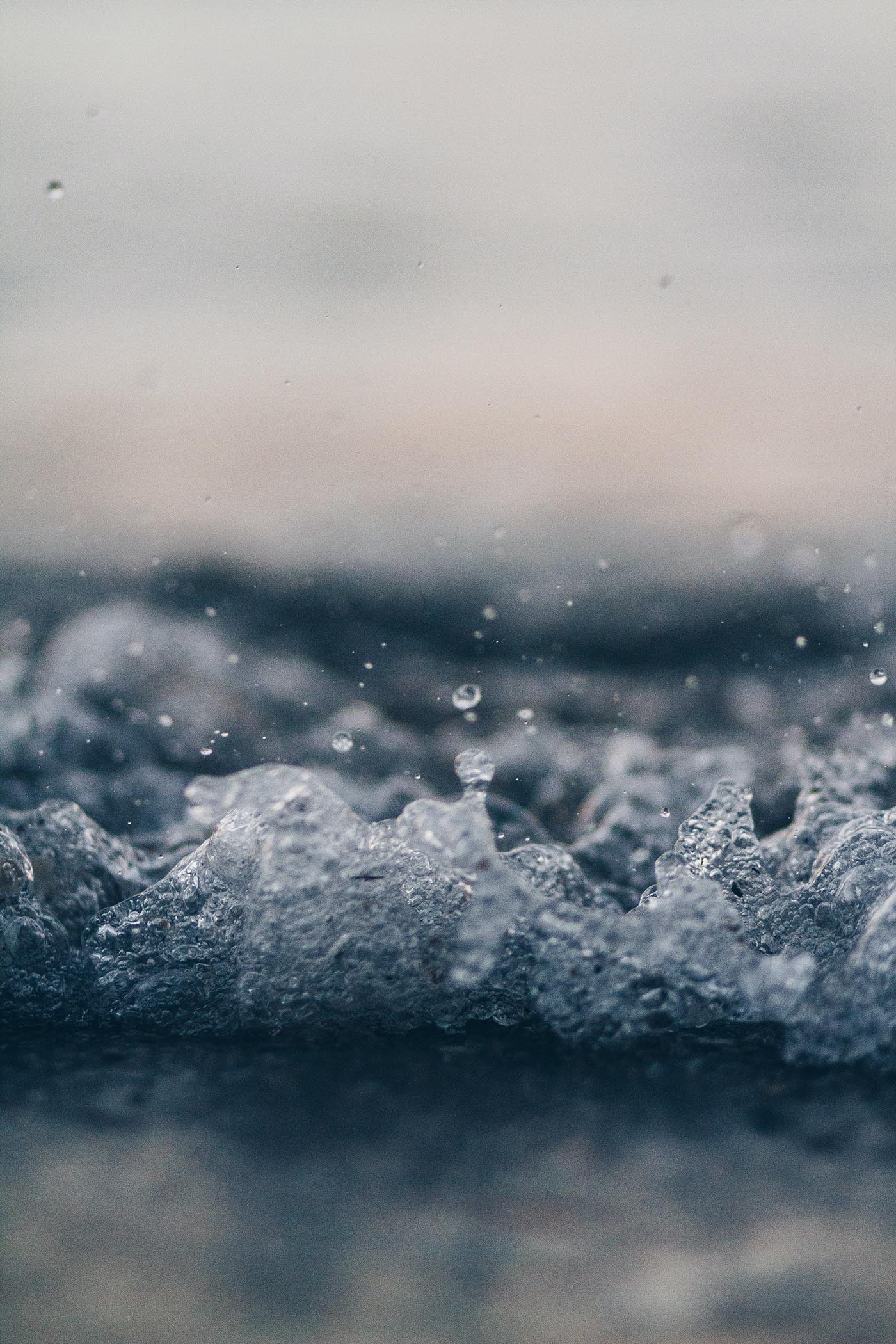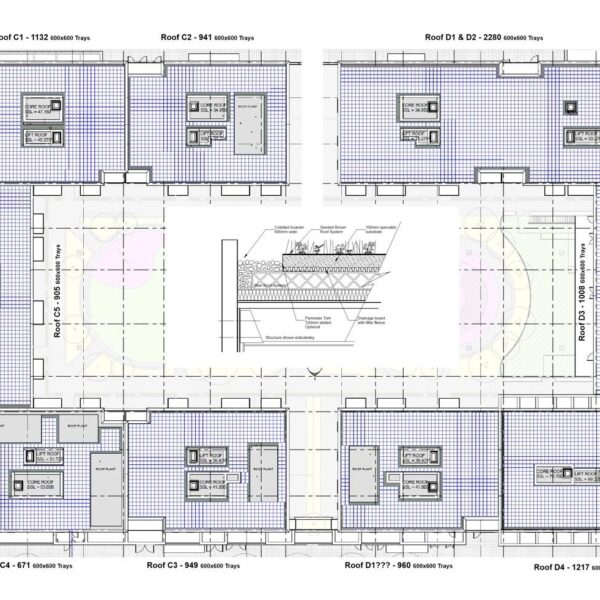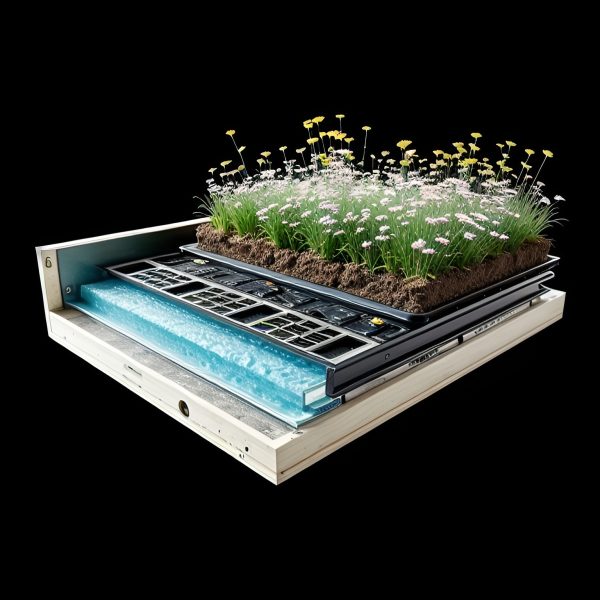Sustainable Stormwater Management for Modern Cities.
Cities around the world are facing increasingly frequent and severe rainfall events due to climate change. As a result, traditional stormwater management systems are often overwhelmed, leading to flooding and water pollution.
In response to these challenges, innovative solutions like Blue Roofs have emerged as a sustainable and effective way to manage stormwater in urban environments.
In this article, we will delve into the fascinating world of Blue Roofs, exploring how they work and why they are becoming an integral part of sustainable city planning.
Understanding the Concept of Blue Roofs
At its core, a Blue Roof is not just a roof; it’s a sophisticated stormwater management system. Unlike conventional roofs that rapidly shed rainwater into the drainage system, Blue Roofs are designed to capture, control, and gradually release rainwater. This process not only reduces the risk of flooding but also helps conserve water resources, promote sustainability, and enhance the resilience of urban areas.
How Blue Roofs Function
Blue Roofs have multiple functions which bring benefits to the urban environment
When it rains, the impermeable or semi-permeable surface of the Blue Roof collects rainwater.
The collected rainwater is temporarily stored in the drainage layer and the designated storage medium. This storage can hold a substantial amount of water, depending on the size and design of the Blue Roof.
As the rain subsides, the control mechanisms come into play. They regulate the release of stored rainwater at a controlled rate. This gradual release prevents sudden surges of water into drainage systems, reducing the risk of flooding.
In some cases, the harvested rainwater can be redirected for various purposes, such as irrigation, cooling, or even non-potable uses within the building. This dual functionality promotes water conservation and sustainable practices.
Key Components of Blue Roofs
Blue Roofs are typically constructed with different measures which contribute to their effectiveness
The surface of a Blue Roof is typically engineered to be impermeable or semi-permeable to retain rainwater temporarily. Various materials, such as EPDM rubber, PVC, or modified bitumen, can be used based on the project’s requirements.
Beneath the surface material lies a drainage layer designed to channel rainwater to specific collection points. This layer prevents water from pooling and allows it to flow toward outlets.
Blue Roofs are equipped with control mechanisms that regulate the flow of rainwater. These can include flow restrictors, overflow outlets, and control valves. These mechanisms ensure that the stored rainwater is released at a controlled rate to prevent overwhelming drainage systems.
– STORAGE MEDIUM
Blue Roofs include a storage medium where rainwater is temporarily held. This storage can take the form of trays, containers, or even specially designed roofs with built-in depressions.
– OVERFLOW MECHANISM
To prevent overloading, Blue Roofs have overflow mechanisms that redirect excess water to conventional drainage systems.

Benefits of Blue Roofs
The implementation of Blue Roofs offers a wide range of benefits for cities and building owners alike.
Flood Mitigation
Blue Roofs significantly reduce the risk of localised flooding during heavy rainfall events, protecting properties and infrastructure.
Water Conservation
Harvested rainwater can be reused for non-potable purposes, reducing the demand on municipal water supplies.
Sustainability
Blue Roofs align with sustainable building practices, promoting eco-friendly urban development.
Improved Insulation
Blue Roofs can enhance building insulation, reducing energy consumption and mitigating the urban heat island effect.
Regulatory Compliance
Blue Roofs can enhance building insulation, reducing energy consumption and mitigating the urban heat island effect.
Sewer Overflows
In combined sewer systems, where stormwater and wastewater share the same pipes, blue roofs can be particularly beneficial. By controlling stormwater flow, they help prevent overflows of raw sewage into rivers and streams during heavy rain events.
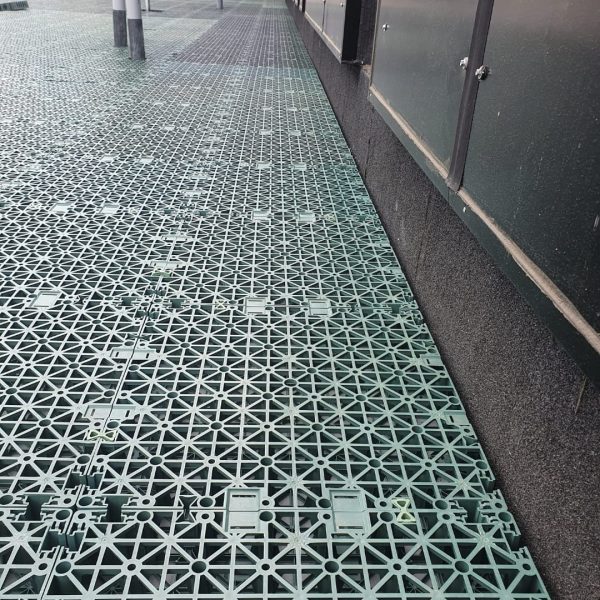
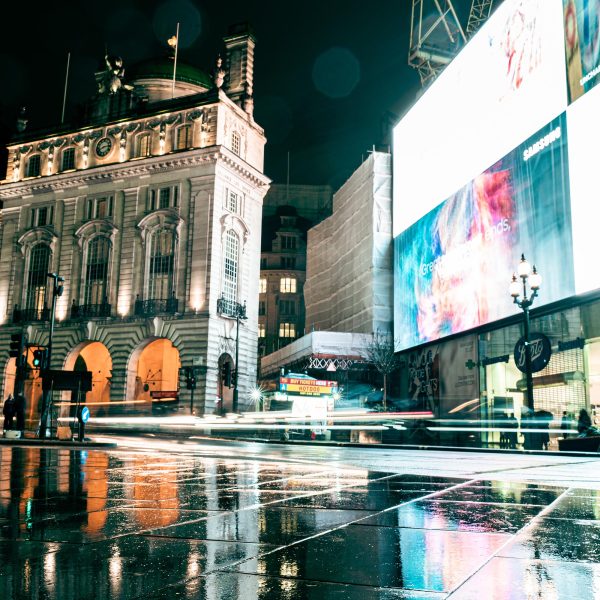
Design Considerations for Blue Roofs
Effective design is crucial for the successful implementation of Blue Roofs. Factors such as local climate, rainfall patterns, building usage, and available space must be considered during the design phase. Proper slope and drainage calculations are essential to ensure efficient water capture and controlled release.
Conclusion
Blue Roofs represent a remarkable innovation in stormwater management, offering cities a sustainable and resilient solution to the challenges posed by climate change. By capturing and managing rainwater in an eco-conscious manner, Blue Roofs help prevent flooding, conserve water, and promote sustainable urban development. As cities continue to grow and adapt to a changing climate, Blue Roofs are becoming an integral part of the blueprint for a more sustainable and resilient urban future.
“In the face of urbanisation and climate change, Blue Roofs are more than infrastructure; they are a commitment to building cities that are both resilient and sustainable. ”


